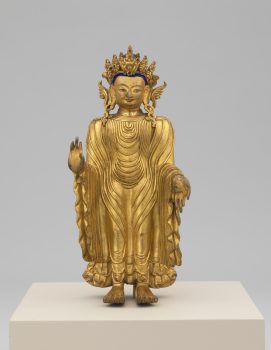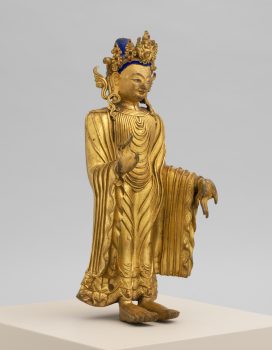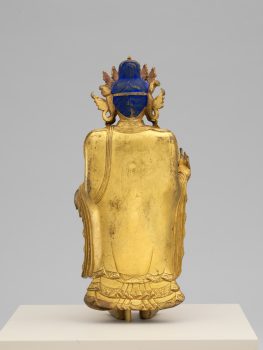Tibet
18th - 19th century



Tibet
18th - 19th century



This sculpture of the Buddha represents him in a form believed to be modeled on the first image of Buddha Shakyamuni. That image was created at the bequest of the Indian king Udhyana and depicts the Buddha when he descended from the Realm of the Thirty-three Gods, after teaching his mother there, to continue his teaching in the human realm. This type of standing Buddha image was very popular in Central Asia and China and subsequently in Tibet.
A vehicle for the preservation and transmission of knowledge. The Buddha’s teachings were originally passed down through oral transmission and storytelling, and stories of the Buddha’s past lives are considered an important source of inspiration and guidance.
The central goal of Buddhism is the liberation of all beings from suffering and the cycle of life, death, and rebirth, known as samsara, through applying the teachings of the Buddha.
An awakened being who understands the true nature of reality and is free from the cycle of birth, death, and rebirth. While there are many buddhas, Siddhartha Gautama is the historical Buddha, whose teachings became the foundation of Buddhism.
Today, Tibetans primarily inhabit the Tibetan Plateau, situated between the Himalayan mountain range and the Indian subcontinent to the west, Chinese cultural regions to the east, and Mongolian cultural regions to the northeast. During the 7th to 9th century, Tibetan rulers expanded their empire across Central Asia, and established Buddhism as the state religion.
Get the latest news and stories from the Rubin, plus occasional information on how to support our work.